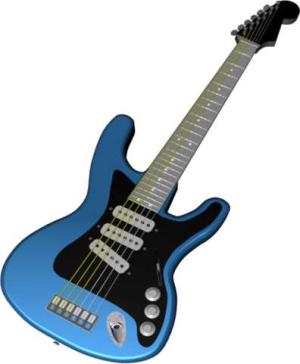
623-877-5776
10122 W. Medlock
Glendale, Arizona
k_bench@yahoo.com
(weekly 30 minute lessons)


|
623-877-5776 10122 W. Medlock Glendale, Arizona k_bench@yahoo.com (weekly 30 minute lessons) |

|
|
What you will experience:
This method assumes that everyone who desires to learn the guitar has the brains to also be a musician. Rather than follow the traditional approach of learning the guitar by memorizing clusters of meaningless little black dots, basic music theory is illustrated in a clear, enjoyable manner that can be understood by all. Scales and chords are then built in the most energy efficient ways possible from this basic knowledge. Diatonic harmony is illustrated in the same way, allowing the student to start developing a good musical ear, being able to transcribe music from recordings quickly or sit in on a session easily. This same knowledge is applied and very useful for the songwriting and composition portion of the lessons. Indeed, with some time, the fretboard in the student's mind can become a musical slide rule or calculator that will help in scoring for a band or orchestra. Experience with this method has shown that adults can learn over 300 chords the first hour! Though they may not be able to play them at that point, they can understand the structure right away and start learning how to construct music and chords like any musician on any other instrument. Too often guitarists are limited badly by the method they learned. However, if their thinking is developed correctly, they may excel using the layout of the fret board as a tool rather than be slowed down by the disadvantages or challenges of the guitar. As guitarists learn through the traditional methods, they come across little "Aha!!" gems that allow them to play more efficiently. This method brings all of those gems to the front, where someone new can benefit immediately from knowing how the fret board is laid out.
Note-Finding System Rather than take the normal amount of time to memorize all of the notes on the fret board, a method is used to find all of the notes as quickly as if they were all memorized using relationships from one string and fret to the others.
Chord and Scale Construction No student plays a chord or scale without knowing its theory and construction. The numbers used on the chord diagrams reflect scale and chord degrees rather than what finger to use. Thus with the same amount of work a student can advance much, much further. For scales, one repeating pattern is learned rather than memorizing pages and pages of black dot clusters. All other scales are learned as modifications and modes of this repeating sequence. Every known scale can be learned from this method, which can be illustrated on less than a page.
How does a whole song work together? How do I construct some really good motifs or chord/scale riffs in the same key and then move to another? What is the most interesting chord movement and why does it sound so cool? These questions are answered and explored in this part of the method. All popular styles of songs are sorted and classified. Students are introduced to this section early, using the easiest chord to play-- the power chord. They gain an understanding of song construction early on while the fingers are still trying to learn the agility needed for more complex chords. Relationships between each power chord and scale degree are established allowing for some great fun playing and writing. Meanwhile many other students in the world are caught in the mire of playing "Little Brown Jug" in hopes of playing something fun someday. Music styles are categorized according to the simplicity or complexity of chord construction and/or movement, rhythm, etc. Advanced chord theory is presented based on 4th shapes (good for jazz guitar) and chord family stacks and inversions based on their diatonic function. Slash chords or plural interior chords and alternating triads are all part of this subject. Modal harmony and pads are also covered in depth in this section.
For those interested, the same theme of making a big job more manageable is continued. Using some useful musical relationships and some mental and physical exercises, reading music on the guitar can be as easy as any other instrument. (Just in case you don't know, the open e on the first string can be played as the same pitch on all 5 of the other strings on a 24 fret guitar.) This is one of the challenges presented to by the nature of the guitar. We turn all challenges into tools. The main purpose of this method is to give you, the student the most return on your investment of time on the guitar. You will become a real musician and use that knowledge to progress much quicker than prominent methods right from the start and right up to your last dying note you ever play. |